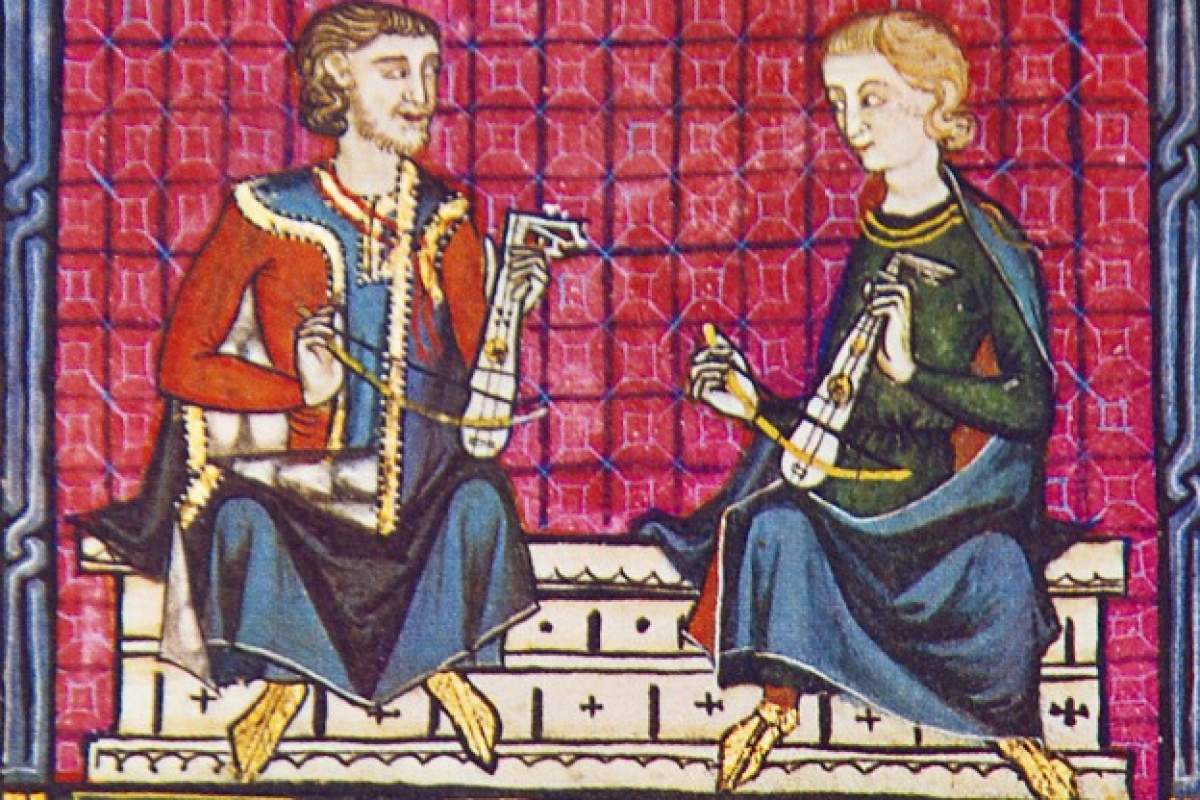
Monumental and Unique
The collection of over 400 Marian devotional songs compiled sometime in the middle to late 13th century at the court of Alfonso X, is monumental in size. The sheer number of pieces contained in the collection is impressive.
Alfonso’s Cantigas de Santa Maria are unique for the vernacular language, Galician-Portuguese, in which they are written. The collection is also unique in terms of its musical notation. Many other 13th century cantigas survive only as poetic texts. However, the Cantigas de Santa Maria manuscripts specify not only the pitches to which the texts are to be sung, but also provide rhythmic indications with relative lengths of notes. Granted, the melodic and rhythmic notation looks very different than today’s music so much is open to interpretation, including questions of style and ornamentation.
Instrumentation and Orchestration
There are entire institutes, websites and databases devoted to the understanding and exploration of these songs, and there are certainly plenty of recordings that tantalize listeners with varied renditions. More often than not, the issues of instrumentation and orchestration are what differentiate the numerous recordings from one another. The 13th c. Cantiga de Santa Maria manuscript is richly illuminated, depicting among other things, musicians playing popular instruments of the day. The illustrations give us an idea of what instruments may have been in use at the time, and provide a sort of loose guide as to the kinds of instruments appropriate for the cantiga repertoire.
The recording featured here uses instruments sparingly, sometimes leaving them out altogether. Soprano, and director Hana Blažíková plays various harps, Barbora Kabatkova—also a soprano—doubles on the harp and psaltery, and Margit Übellacker plays an instrument called dulce melos-which is essentially a keyed hammered dulcimer. Martin Novak joins with various percussion instruments.
Cantigas de Miragres and Cantigas de Loor
There are two types of Cantigas in the collection: lyrical and narrative. The "lyrical" cantigas de miragres tell of the miracles of the virgin mary, while the cantigas de loor are hymns of praise. This CD closes with the short cantiga de miragre, no. 166, which tells of the miraculous healing of a disabled man at Salas.
The Church of Our Lady...
This CD was recorded in Prague at the Church of Our Lady beneath the Chain at the End of the Bridge…a church that with a name like that has, no doubt, its own interesting history and legend!









